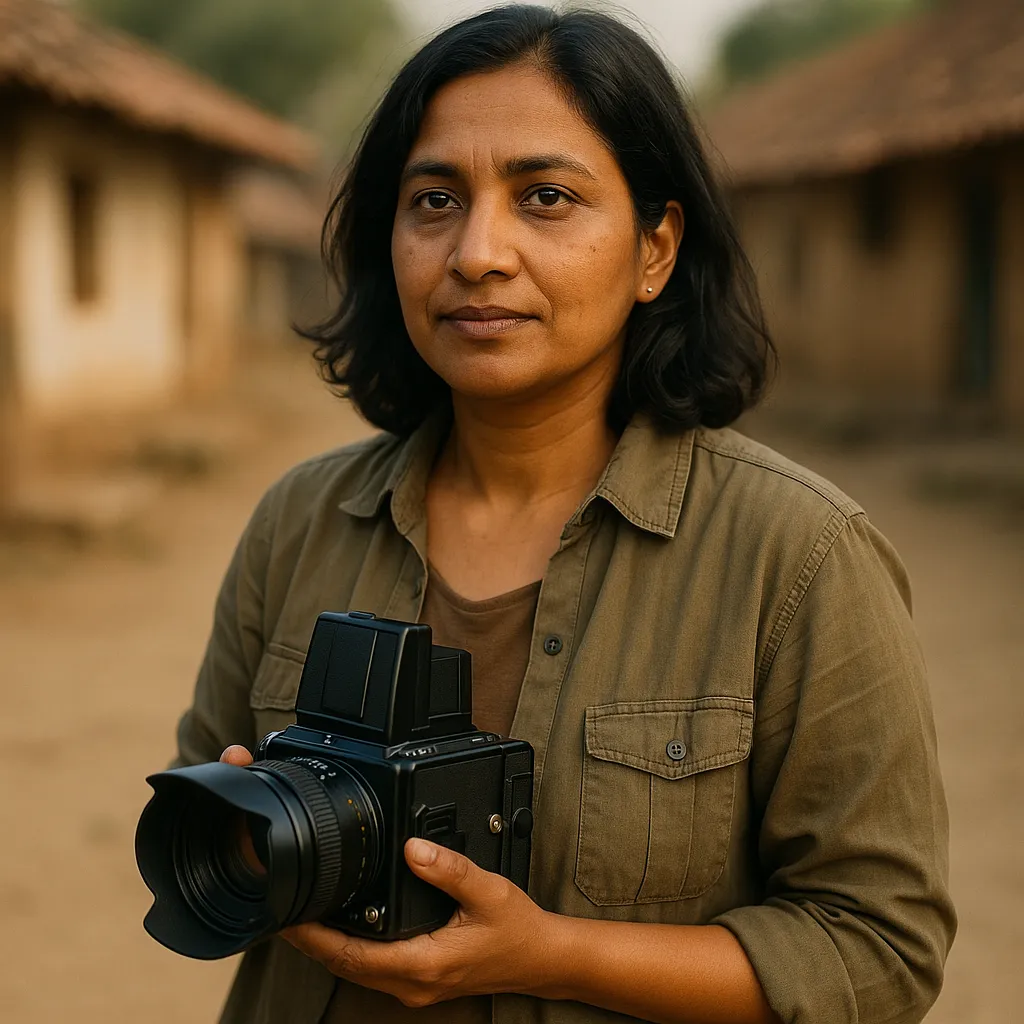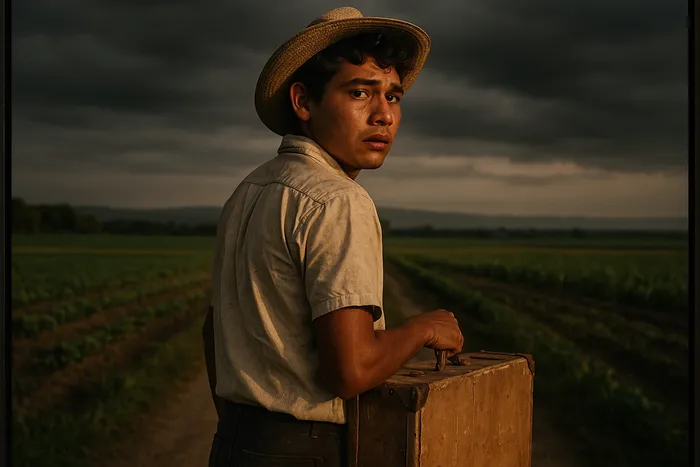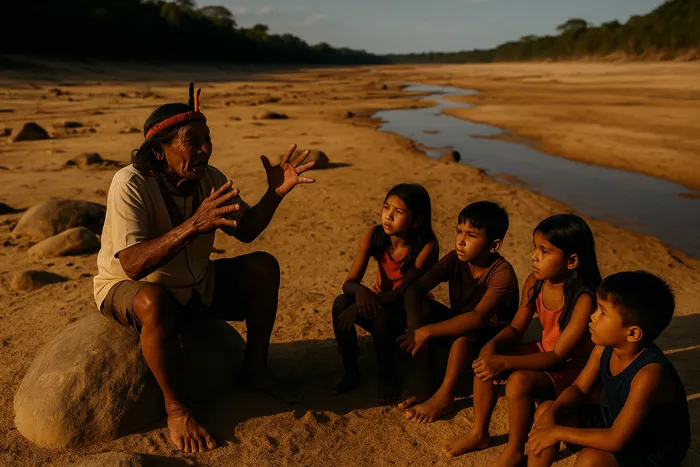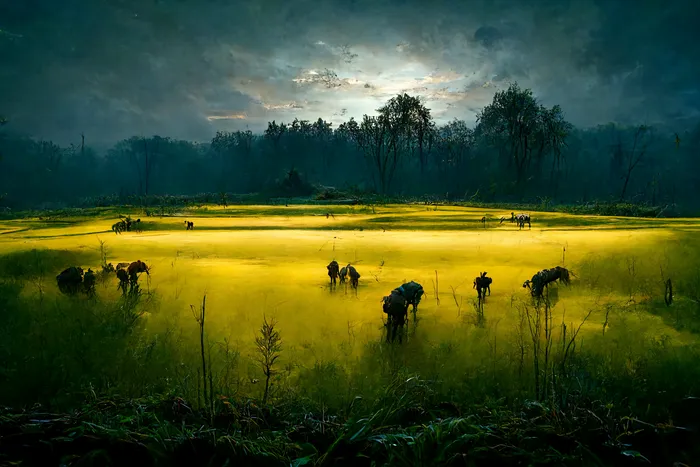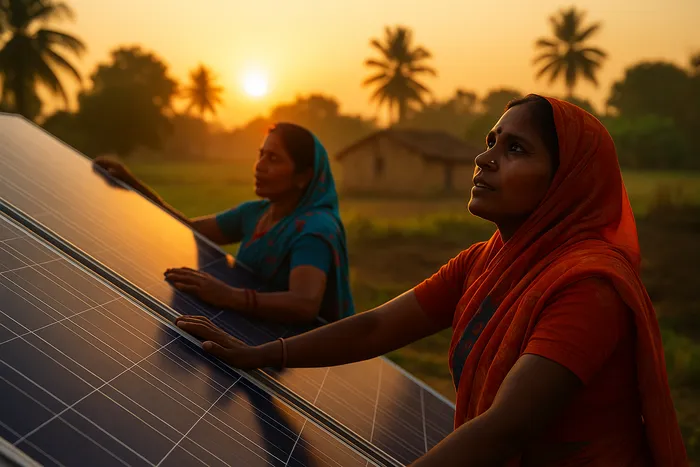The Uprising Seeds
In the hills of Odisha, where monsoons have grown erratic and temperatures soar beyond memory, three generations of hands work the same soil with different urgencies. Maya Patel's remarkable series "The Uprising Seeds" documents how indigenous communities across India are responding to climate crisis not with despair, but with the patient practice of their ancestors—amplified by contemporary innovation and fierce determination.
Over two years, Patel lived within farming communities practicing climate-adaptive agriculture, following seasonal cycles from sowing to harvest. What emerges is a profound meditation on how traditional ecological knowledge offers concrete solutions to our planetary emergency. These are not nostalgic portraits of a disappearing past, but urgent documentation of practices that could help secure our collective future.
The series reveals indigenous agricultural systems as sophisticated climate technologies: drought-resistant millets that thrive where hybrid crops fail, water harvesting techniques that capture erratic rains, soil restoration methods that sequester carbon while feeding communities. Each photograph captures knowledge in motion—hands that read the sky for weather patterns, eyes that identify beneficial insects, voices that carry forward five millennia of agricultural wisdom.
Patel's camera finds extraordinary beauty in ordinary acts: the geometric patterns created when women sort indigenous rice varieties by color and trait, the tender concentration of a grandmother guiding her granddaughter's hands in seed selection, the exuberant celebration when drought-resistant crops yield abundance despite a failed monsoon. This is documentary photography that refuses the extractive gaze, instead offering images that honor both the knowledge being shared and the communities sharing it.
The photographer's medium format camera captures these moments with botanical precision—every seed variety, every subtle gesture of plant care, every modification of ancient technique for contemporary challenge. The resulting images pulse with life: rich earth tones punctuated by the vibrant greens of crops that have evolved alongside human communities for thousands of years, the golden light of dawn illuminating faces focused on the patient work of tending the world.
But "The Uprising Seeds" is ultimately about more than agriculture. In showing how traditional knowledge adapts to contemporary crisis, Patel documents a form of climate action that is simultaneously radical and rooted. These communities offer an alternative to the techno-fixes and market solutions that dominate climate discourse—one that understands healing the earth and healing human communities as inseparable work.
The title itself suggests both hope and insurgency. These seeds are uprising—springing from soil, carrying forward resistance, growing toward futures their planters may never see. In documenting their stories, Patel offers visual proof that solutions to our climate emergency already exist, preserved by communities who have been practicing regenerative relationship with land since long before anyone coined the term.
Image Captions
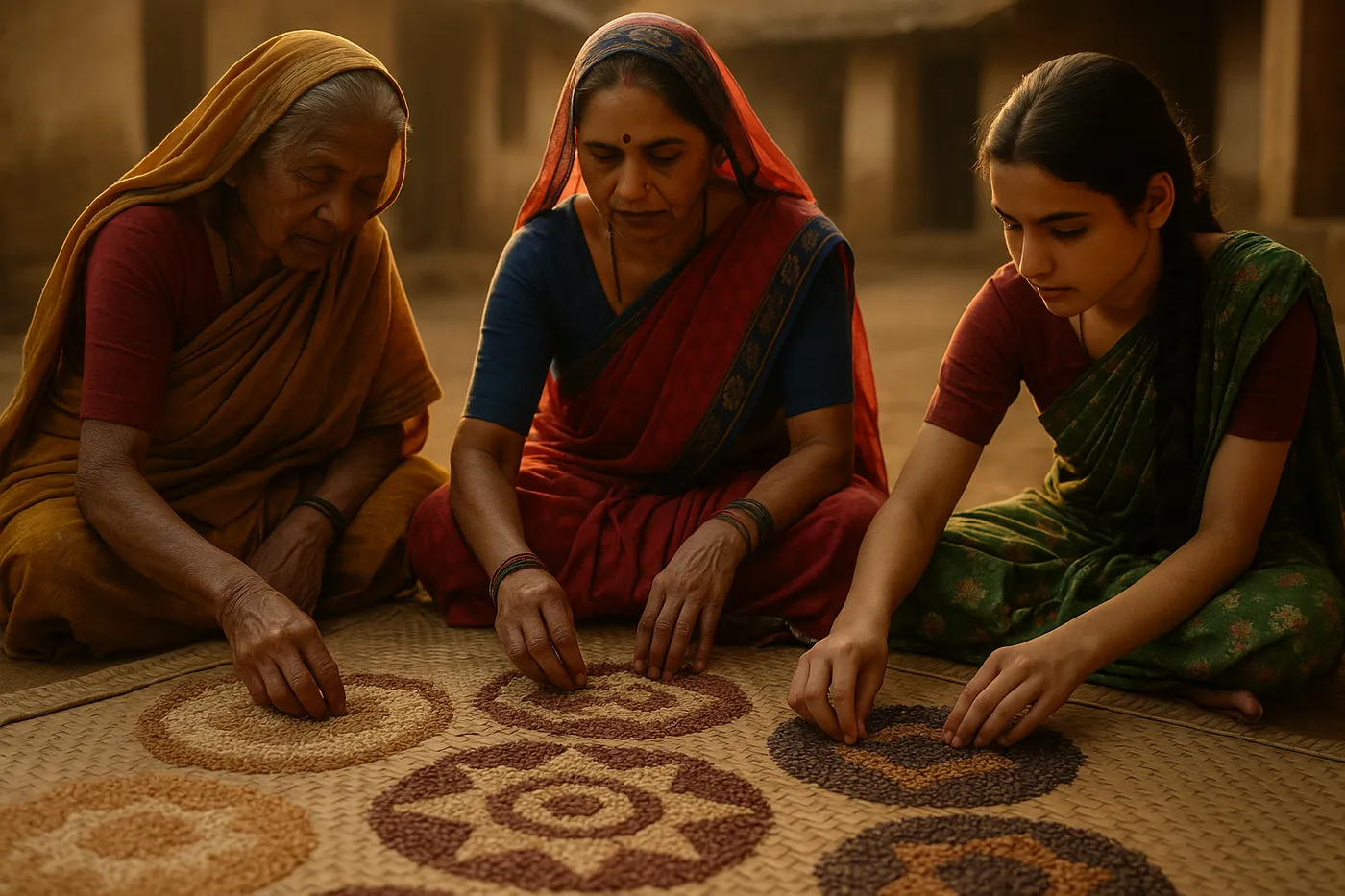
Photo 1: Ceremony of Varieties
Photo 1: "Ceremony of Varieties" Women from three generations sort heritage rice varieties by color, size, and drought resistance in Kandhamal district, Odisha. The geometric patterns created by their careful selection mirror the biodiversity these communities have maintained for millennia, each variety representing specific adaptations to local climate conditions and cultural practices.
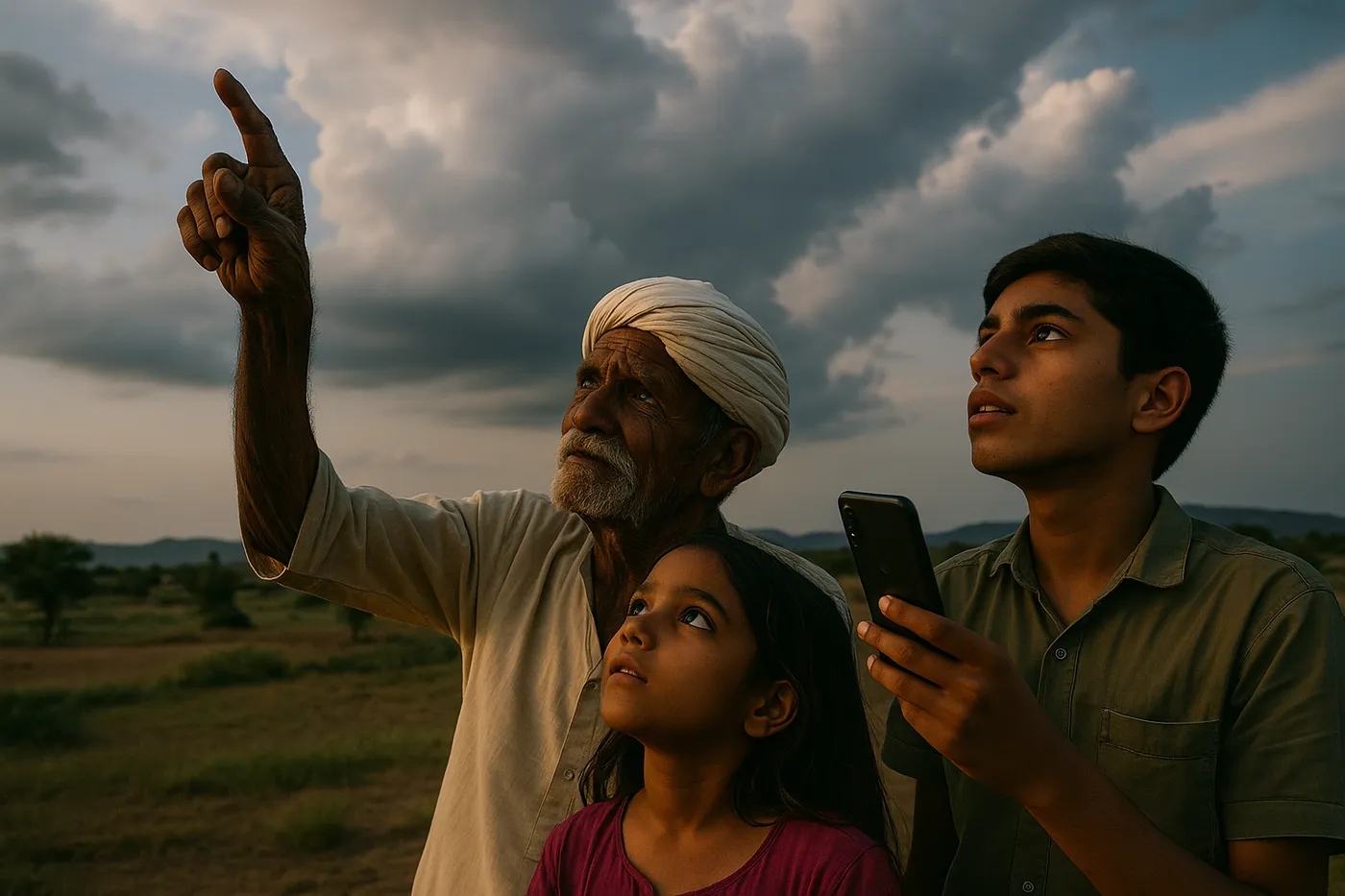
Photo 2: Reading the Sky
Photo 2: "Reading the Sky" Elder Kamla Majhi teaches her granddaughter and a young climate researcher to identify monsoon patterns in cloud formations while documenting traditional weather prediction methods. This intergenerational knowledge exchange represents how ancient wisdom meets contemporary climate science in communities on the frontlines of environmental change.

Photo 3: Carbon Healing
Photo 3: "Carbon Healing" Hands of different ages mix biochar with compost, creating soil amendments that sequester carbon while improving crop resilience. This practice, refined over generations, represents indigenous climate solutions that simultaneously address food security and atmospheric carbon—demonstrating how traditional knowledge offers sophisticated responses to contemporary crisis.
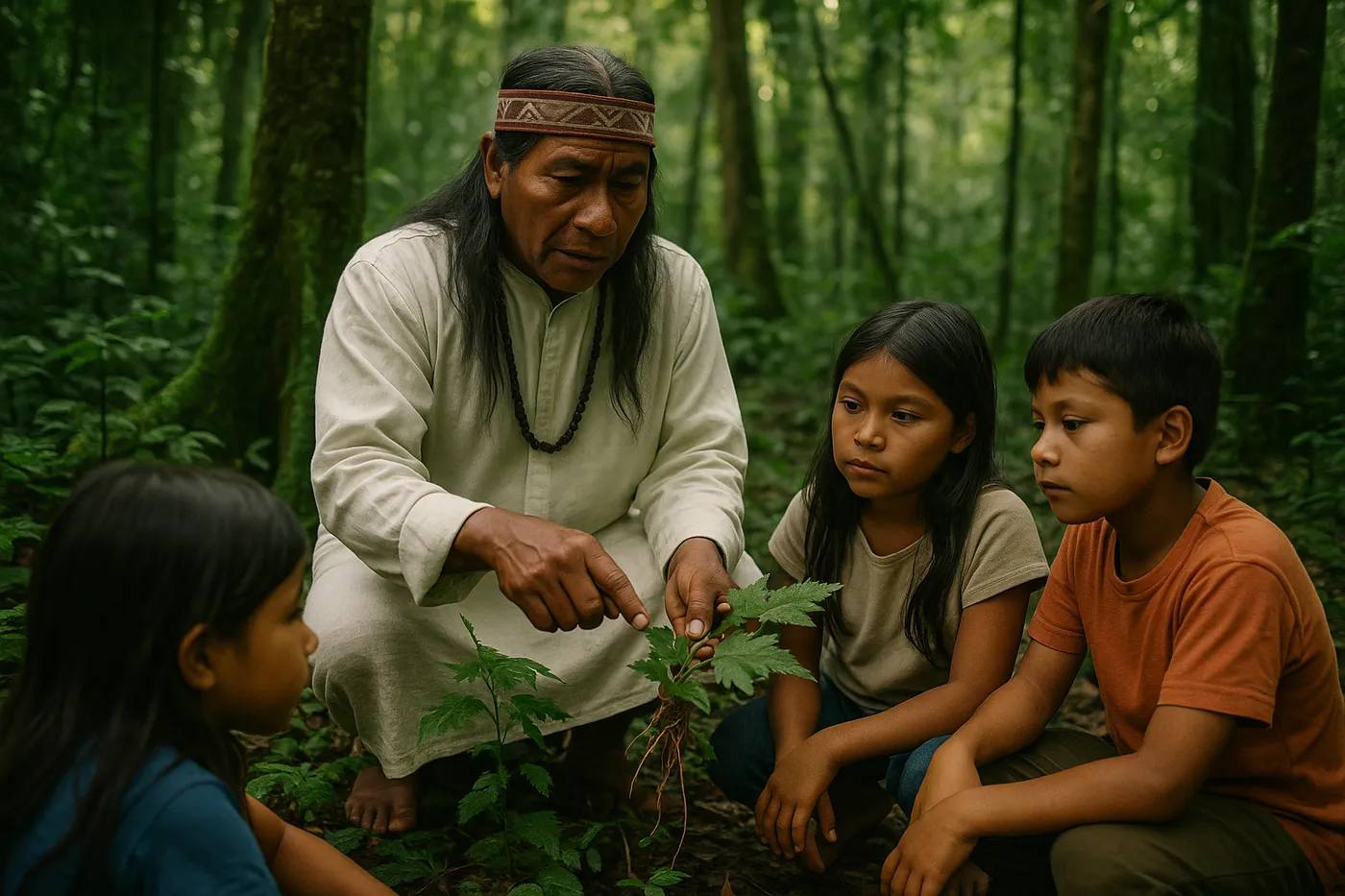
Photo 4: Forest Pharmacy
Photo 4: "Forest Pharmacy" Indigenous healer Tulsi Munda shows children medicinal plants that have proven resilient to changing climate patterns in the sacred groves of Jharkhand. This biodiversity preservation work maintains both community health systems and climate-adapted plant varieties, illustrating how cultural survival and environmental resilience intertwine.

Photo 5: Abundance Despite Crisis
Photo 5: "Abundance Despite Crisis" Community members celebrate the harvest of drought-resistant finger millet in a field that withstood the season's failed monsoon. Their joy represents a form of climate resistance—finding abundance through traditional varieties and practices when conventional agriculture fails, proving that indigenous knowledge offers genuine food security.
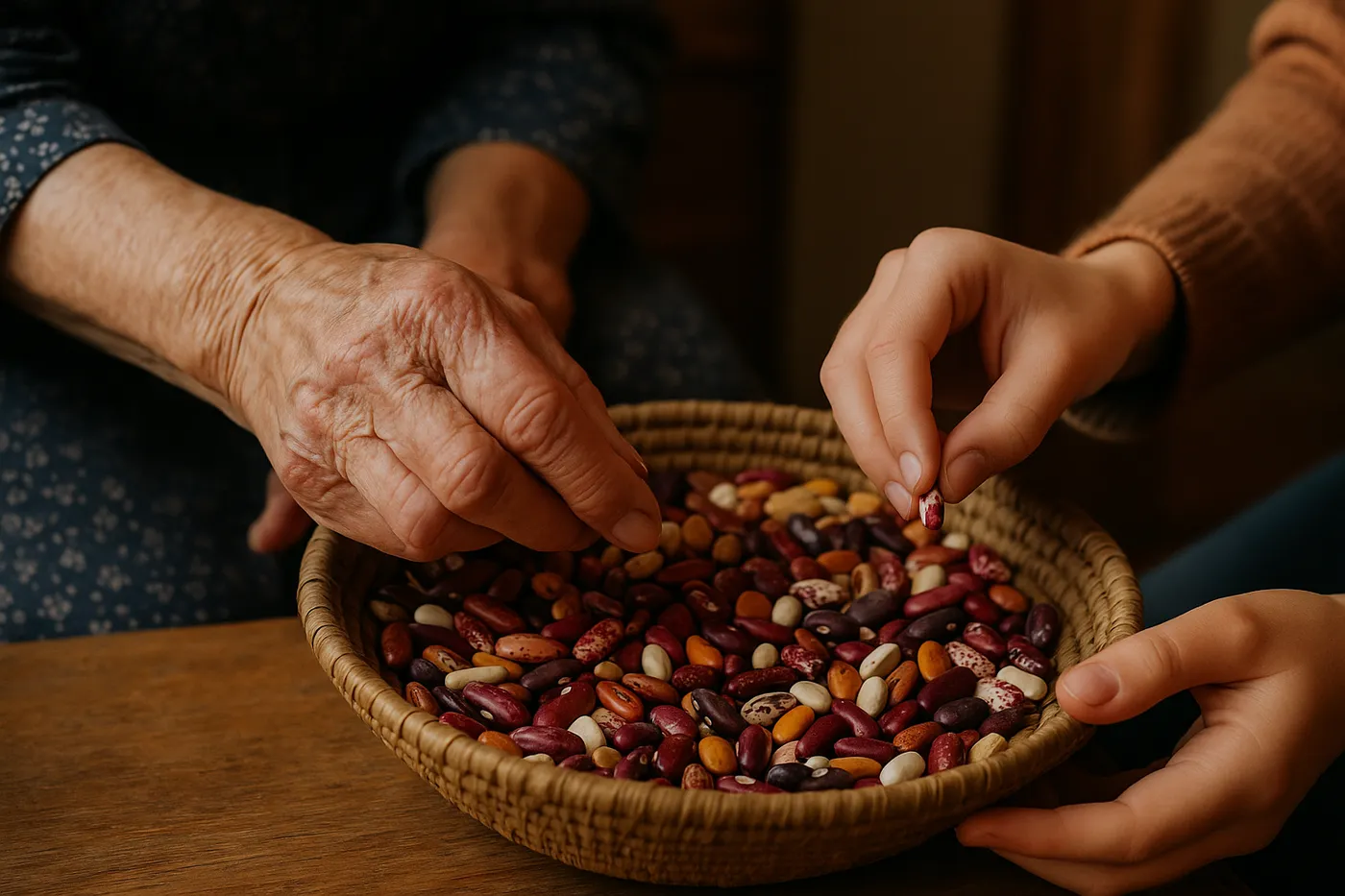
Photo 6: Knowledge in Motion
Photo 6: "Knowledge in Motion" A grandmother's weathered hands guide her granddaughter's in selecting seeds for the next season's planting, each touch transmitting generations of accumulated wisdom about soil, season, and survival. This moment captures how traditional ecological knowledge moves between generations, adapting ancient practices for contemporary challenges.
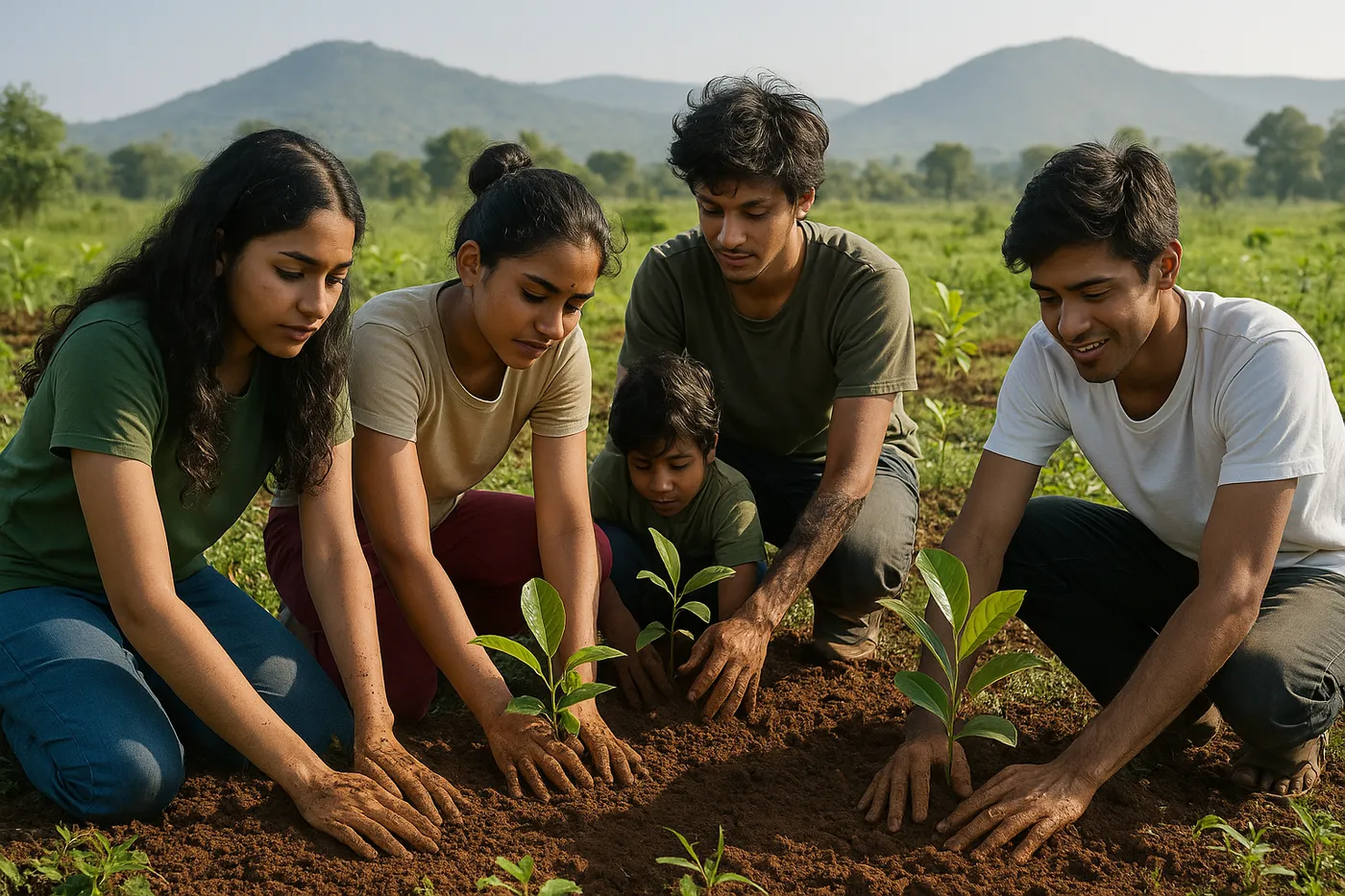
Photo 7: Future Forest
Photo 7: "Future Forest" Young environmental activists plant indigenous fruit saplings that their own grandchildren will harvest, embodying the long-term thinking essential for climate action. Their work represents how climate solutions require both traditional knowledge and youth innovation, connecting ancestral wisdom with contemporary urgency for planetary healing.
Photo Generation Prompts

Photo 1: Prompt:
Photo 1 Prompt: Three generations of Indian women sorting colorful heritage rice varieties on woven mats, geometric patterns of seeds creating mandalas of biodiversity, shot on Pentax 645Z with 55mm f/2.8 lens, shallow depth of field with background softly blurred, warm golden morning light filtering through traditional village courtyard, rule of thirds composition with hands as focal points, rich earth tones and vibrant grain colors, contemplative and reverent mood, award-winning photojournalism, World Press Photo winner, documentary photography excellence

Photo 2: Prompt:
Photo 2 Prompt: Indigenous elder with weathered hands pointing to monsoon clouds while young girl and teenager with smartphone look upward, three generations learning weather patterns together, rural Indian landscape background, shot on Pentax 645Z with 80mm f/4 lens, natural outdoor lighting during golden hour, diagonal composition showing connection between earth and sky, muted blues and warm skin tones, sense of wonder and knowledge transmission, award-winning photojournalism, World Press Photo winner, environmental documentary photography

Photo 3: Prompt:
Photo 3 Prompt: Multiple pairs of hands mixing dark biochar with rich brown compost soil, creating swirling patterns of carbon sequestration, extreme close-up detail shot, shot on Pentax 645Z with 120mm macro lens, natural outdoor lighting emphasizing texture, shallow depth of field highlighting soil composition, rich brown and black earth tones with hints of green from decomposing matter, tactile and hopeful mood, award-winning photojournalism, World Press Photo winner, environmental solutions photography

Photo 4: Prompt:
Photo 4 Prompt: Indigenous healer showing children medicinal plants in sacred forest grove, hands pointing to climate-resilient herbs and roots, dappled forest light filtering through canopy, shot on Pentax 645Z with 35mm f/3.5 lens, natural diffused lighting creating mysterious atmosphere, environmental portrait composition with lush green background, vibrant forest greens with earthy brown accents, sense of ancient wisdom and biodiversity preservation, award-winning photojournalism, World Press Photo winner, cultural documentation photography

Photo 5: Prompt:
Photo 5 Prompt: Rural Indian community celebrating millet harvest with raised hands and joyful expressions, drought-resistant grain stalks golden in background, traditional farming village setting, shot on Pentax 645Z with 45mm f/4 lens, natural late afternoon light creating warm glow, wide group shot showing collective celebration, golden grain colors with vibrant sari fabrics, exuberant joy and resistance mood, award-winning photojournalism, World Press Photo winner, agricultural documentary photography

Photo 6: Prompt:
Photo 6 Prompt: Elderly grandmother's deeply lined hands guiding young girl's small fingers in selecting seeds from basket, extreme close-up of intergenerational knowledge transfer, indoor setting with traditional woven baskets, shot on Pentax 645Z with 120mm macro lens, soft natural window lighting emphasizing hand textures, shallow depth of field with seeds in sharp focus, warm brown and amber tones, tender and profound connection mood, award-winning photojournalism, World Press Photo winner, human interest photography

Photo 7: Prompt:
Photo 7 Prompt: Young environmental activists planting indigenous fruit tree saplings in reforestation area, hands covered in soil working together, rural Indian landscape with hills in background, shot on Pentax 645Z with 55mm f/5.6 lens, natural morning light creating hopeful atmosphere, environmental portrait showing connection to land, vibrant greens of new growth with earth brown soil, optimistic future-focused mood, award-winning photojournalism, World Press Photo winner, climate action documentary photography
Photographer Portrait Prompt
Professional portrait of Indian woman photographer in her late thirties with warm brown skin, intelligent dark eyes, shoulder-length black hair, wearing simple earth-toned clothing suitable for fieldwork, holding medium format camera, natural outdoor lighting in rural village setting with traditional architecture softly blurred in background, confident and contemplative expression showing connection to documentary subjects, professional portrait photography, natural documentary style lighting

